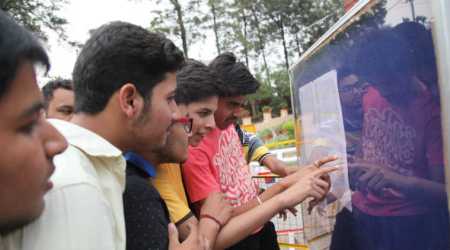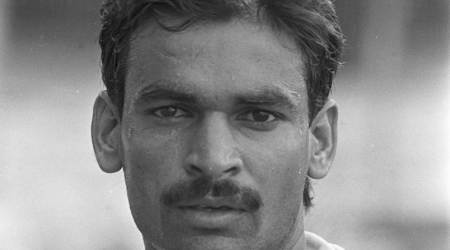 India women’s cricket team. (PTI)
India women’s cricket team. (PTI)
I am sitting here in my village home in Raigad in the Konkan, the power back just in time to catch the first ball bowled by the Indian Women’s Cricket team in the finals of the World Cup 2017. It is a perfect day at Lord’s, the field looking glorious and the stands packed to capacity. And I think -– what a journey it has been for each of these gutsy young women from their homes in villages and towns across India to have made it, against all odds, to this Mecca of cricket in the UK.
The journey I speak of is not just the physical one from gaon and sheher to the heart of Imperial Britain. It is a journey far more complex, far more significant, and one that marks a huge leap for Indian women.
Nearly 25 ago, when my husband and I moved from a lifetime in urban India to live in a village in Alibag Taluka of the Konkan region, literally just across the harbour from the modern metropolis and commercial capital of Mumbai, my first year was spent unlearning, relearning and getting to know a very different reality from the ground.
This was Maharashtra, known for its progressive and relatively liberal positions on women. And yet as a small group of us wandered from village to village, we saw the deep-rooted and entrenched attitudes with respect to girls, and the relative freedoms and spaces available to boys, starting right at the bottom.
I joined the Village Education Committee. Along with a retired teacher and neighbor, Usha Patil, we visited schools to find out why girls did not take part in sports and why hardly any sports instructors were to be found. And we talked with mothers about the need to give their girls greater freedom and opportunity to aspire to and prepare for all that they wanted – just as they did for their sons.
In village after village, the first sight that met one’s eye was the cricket pitch in every maidan – and the masses of boys and men playing, sitting, running, shouting — dominating the scene so to speak.
On the margins of the maidan small clusters of girls usually stood, shyly. Asked why they didn’t play, they would wistfully say that nobody let them. Usha and I would go from home to home persuading the mothers to allow their daughters to go out to play – cricket, climb trees, anything at all – but of course they had to help out with the endless house chores when they returned from school.
Because that is what girls, and women, do. They fetch water, sweep, wash clothes, chop the vegetables, so that their brothers can come home after they finish playing and find some nourishment ready. I realized, then, why women find it so hard to find their place on the “high table” – whether it is in the village or in parliament, and especially at family decision-making forums.
Truth is, boys are not just permitted, but encouraged to occupy public spaces from very early on – girls are socialised to keep to private spaces. But leadership skills, lung power and the confidence to occupy these public spaces are developed on the cricket and soccer field, at bullock cart races and in classrooms.
So when a Mitali Raj or Harmanpreet Kaur or Jhulan Goswami or Deepti Sharma find themselves today at the centre of attention – the media’s darlings and the sudden recipients and good wishes from all over – let us remember that till they beat Australia nobody was even talking about the Indian women’s cricket team. No TV channel was showing their matches – the few comments there were, was limited to chest-thumping about how they had thrashed Pakistan.
Before the final at Lord’s in London, when the girls lost by nine aching runs to England, BCCI had predictably announced a generous bonus to each player. But no one bothered to ask them about the kind of support or financial resources these girls had received during all these heartbreaking years of training all these years ago.
Each of us have hung on to every ball and commentary of the Men’s cricket matches, but has anyone bothered to keep track of women in sport? It isn’t as if the stories aren’t there. That’s why when we talk about this extraordinary achievement of getting to the World Cup finals, we need to properly understand what this means.
Of course, we would have loved the Cup, the gold medal hanging around the necks of each of our girls. But as women, and feminists, we have to realize that these girls have demonstrated something far more important, that is, the will and determination to follow their dreams.
They have emerged out of their homes and are claiming public spaces, hitherto the exclusive preserve of men. Just their presence at Lord’s – no mean journey, by itself – is representative of their determination to overcome age-old prejudices about what girls should or shouldn’t do, drummed into them from the time of their birth. That is the tougher and far more significant journey these young women have undertaken.
For me personally, the abiding image of this cricket series will be the heartwarming picture of the young Pakistani woman cricketer, Kainat Imtiaz, hugging her Indian role model, Jhulan Goswami, and telling her how she had inspired her to play cricket.
In this era of chest-thumping nationalism, we salute you, Mitali Raj and your team, for all you represent, for your journey so far. You are role models and icons to thousands of young women and girls who will quote you as examples when they fight off the challenges from their families and communities.
You may have lost at Lords, but the truth is that you have shown the way. After tonight, we will never forget what each of you stand for.

